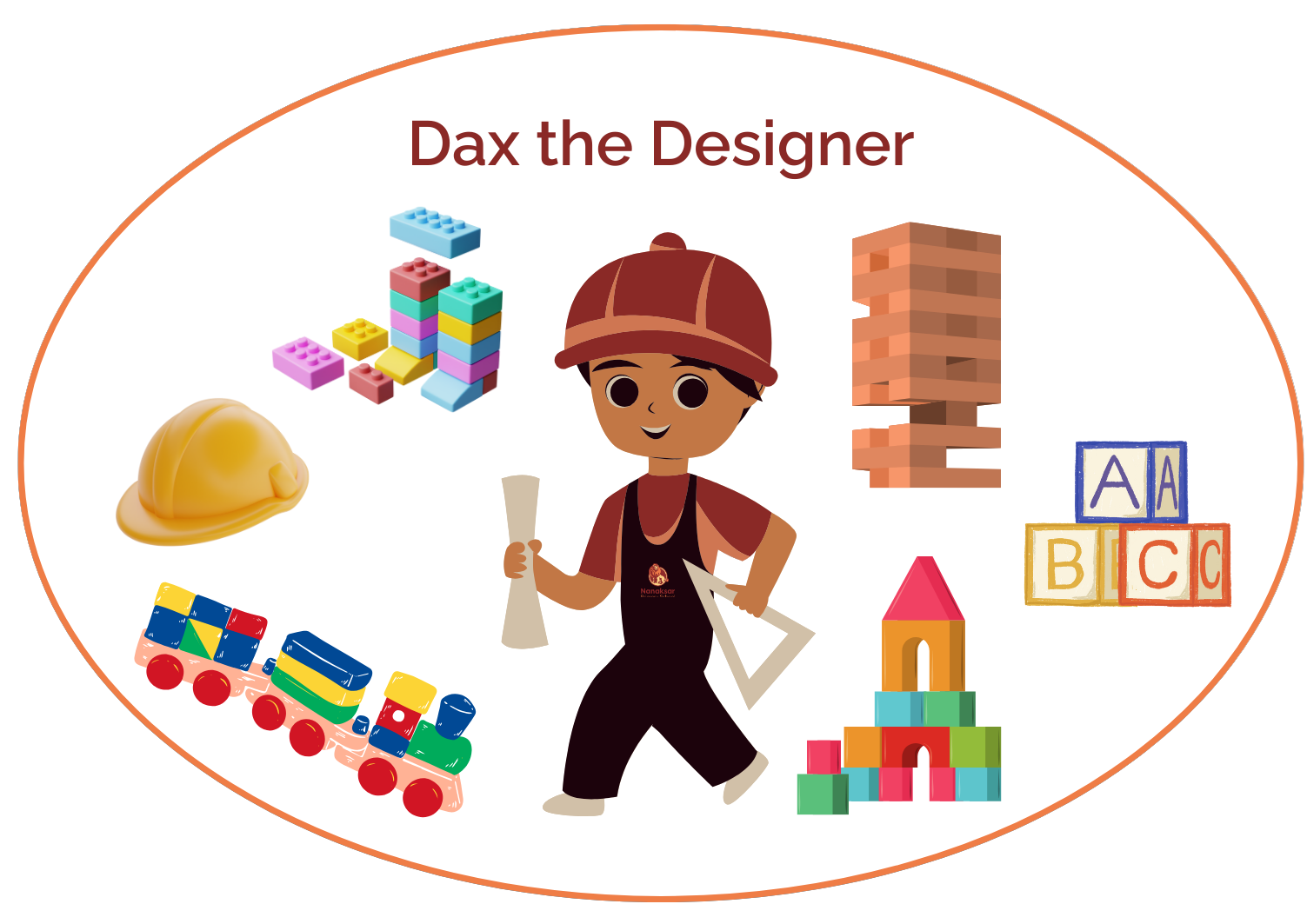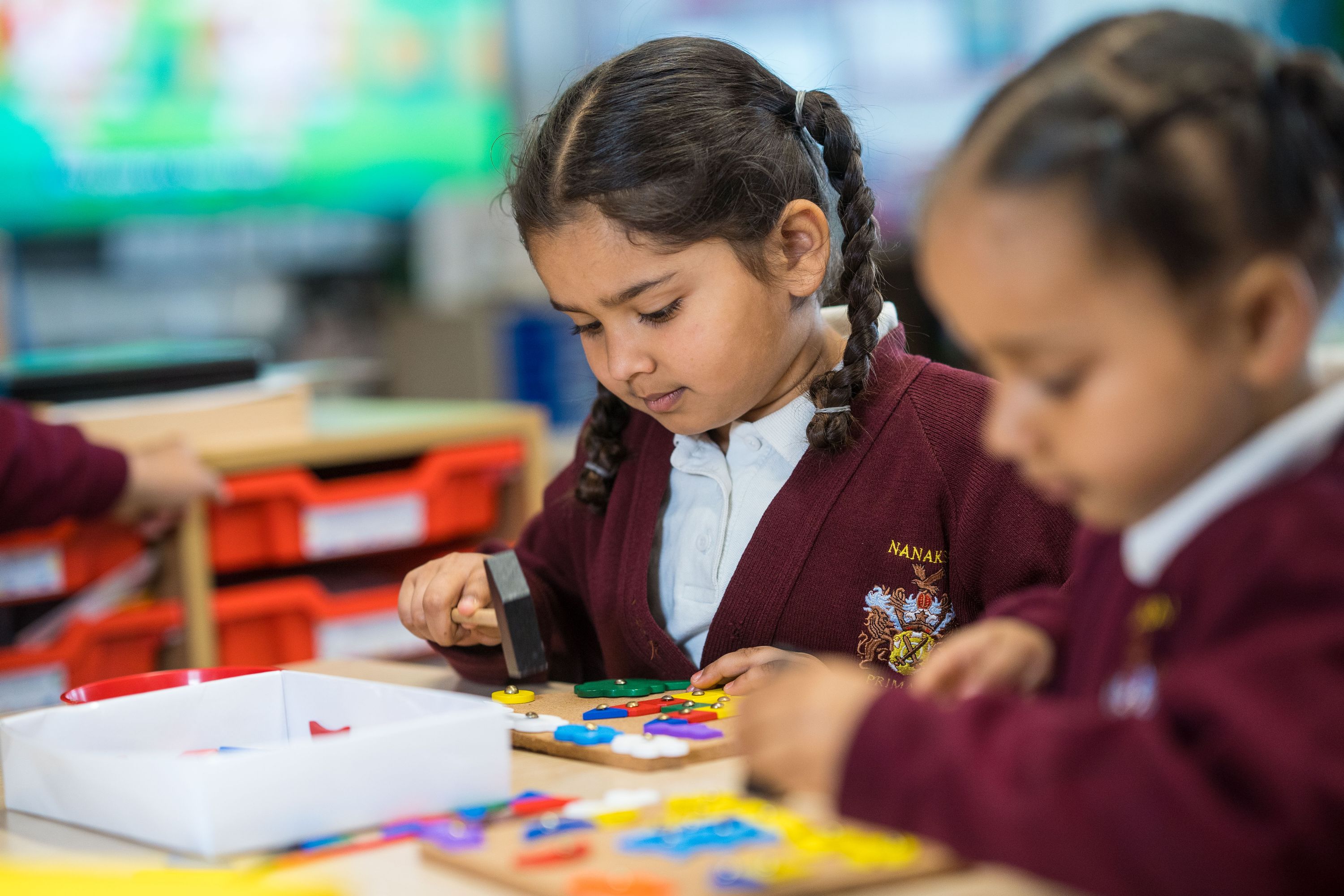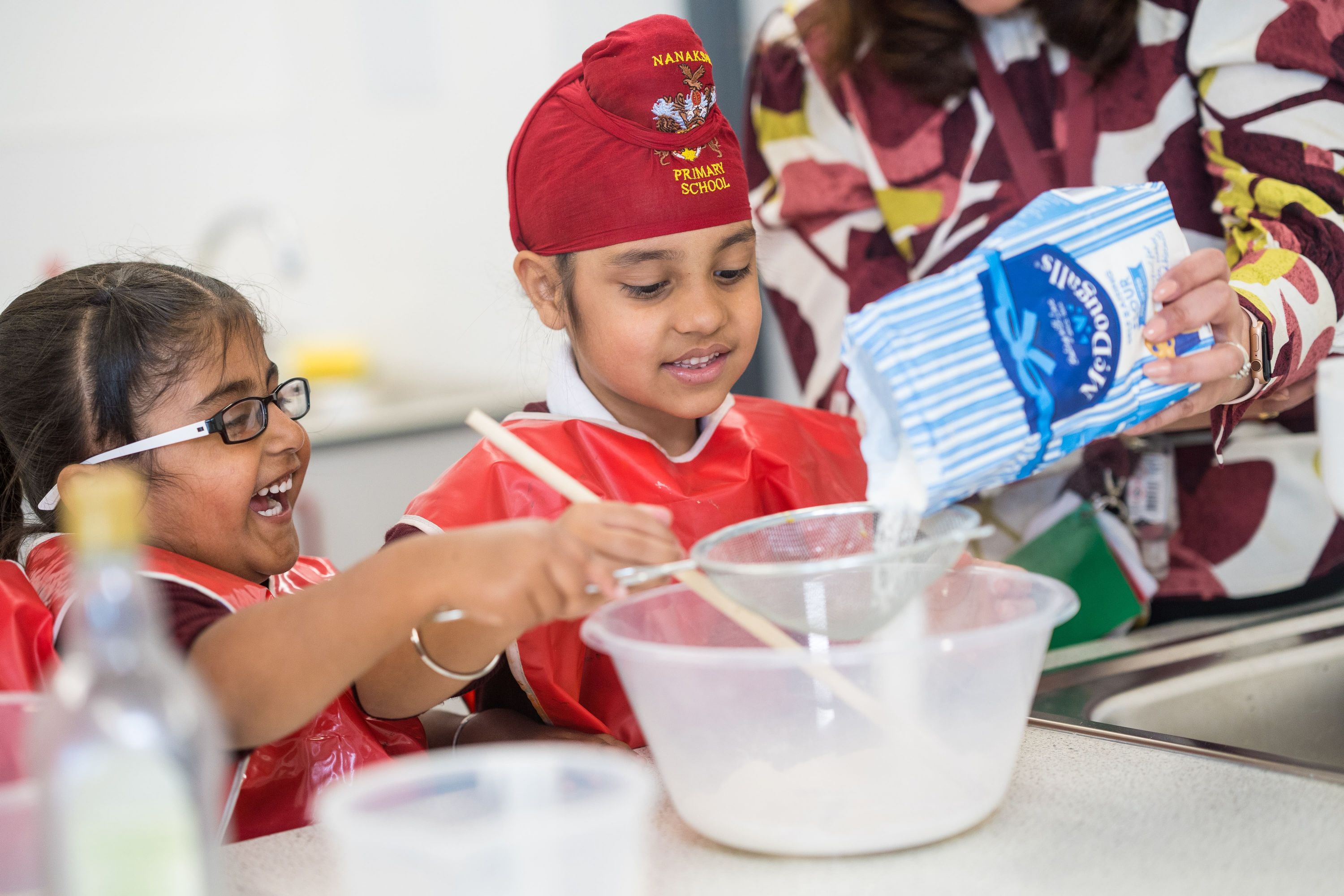Design & Technology

At NPS our pupils understand the core skills needed to work as a designer with the use of the school curriculum character – Dax the Designer. These characters are regularly used to encourage pupils to reflect on the key skills needed when working within DT

We are in school to Acquire the knowledge and skills that will allow us to Achieve our aims and go on to what we Aspire to do.
Our aspiration for every learner (intent):
At Nanaksar Primary School, we believe that Design Technology is an inspiring, rigorous and practical subject which encourages pupils’ creativity and imagination. Our curriculum offers the experience to select and use appropriate tools safely and effectively to make a product they are proud of. Our Design and Technology scheme of work aims to inspire pupils to be innovative and creative thinkers who have an appreciation for the product design cycle through ideation, creation, and evaluation. We want pupils to develop the confidence to take risks, through drafting design concepts, modelling, and testing and to be reflective learners who evaluate their work and the work of others.
With the majority of our pupils with English as an additional language, our Design Technology curriculum allows our pupils to immerse themselves in a hands-on learning experience to express or communicate their ideas. Specific techniques and skills are modelled to our pupils so they can explore and appreciate the design, make and evaluate cycle.
At Nanaksar Primary, we understand that Design Technology allows pupils to design and make products that solve real and relevant problems, within a variety of contexts, considering their own and others’ needs, wants and values. In all areas of Design Technology pupils are encouraged to consider the effectiveness of their designs and requirements of the product. Every pupil will have the opportunity to learn and extend their understanding, experience and application in the use of technology, including I.C.T, in as wide a variety of situations as possible.
How we support pupils to acquire this learning (implementation):
Each stage of the design process (design, make, evaluate) is underpinned by technical knowledge which encompasses the contextual, historical and technical understanding required for each strand. Through the Kapow Design and technology scheme, pupils respond to design briefs and scenarios that require consideration of the needs of others, developing their skills in the six key areas. It provides a spiral curriculum, with key areas revisited again and again with increasing complexity, allowing pupils to revisit and build on their previous learning.
Lessons incorporate a range of teaching strategies from independent tasks, paired and group work including practical hands-on, computer-based and inventive tasks. This variety means that lessons are engaging and appeal to those with a variety of learning styles. Knowledge organisers for each unit support pupils in building a foundation of factual knowledge by encouraging recall of key facts and vocabulary. In summary the following principles form our implementation of the curriculum:
- A detailed scheme designed by experts in their fields, adapted specifically to the needs of our pupils
- Following a spiral curriculum model for pupils to revisit key skills with increasing complexity for progression and will leave Year 6 as well rounded artists
- Lessons incorporate a range of teaching strategies with hands-on experiences to appeal to those with a variety of learning styles
- Develop the creative, technical and practical expertise needed to perform everyday tasks confidently and to participate successfully in an increasingly technological world
- Build and apply a repertoire of knowledge, understanding and skills in order to design and make high-quality prototypes and products for a wide range of users
- Critique, evaluate and test their ideas and products and the work of others
- Understand and apply the principles of nutrition and learn how to cook



How we measure achievements (impact):
Having implemented the Design Technology curriculum, all pupils should leave Nanaksar Primary school equipped with a range of skills to enable them to succeed in their secondary education and be innovative and resourceful members of society. The impact of the scheme of work ensures the following:
- Pupils understand the functional and aesthetic properties of a range of materials
- Pupils understand how to use and combine tools to carry out different processes for decorating and manufacturing products
- Pupils build and apply a repertoire of skills, knowledge and understanding to produce high quality, innovative outcomes
- Pupils understand and apply the principles of healthy eating in their personal lives
- Pupils develop an appreciation for key individuals, inventions, and events in history and of today that impact our world
- Pupils recognise where their decisions can impact the wider world in terms of community, social and environmental issues
- Pupils self-evaluate and reflect on learning at different stages and identify areas to improve

